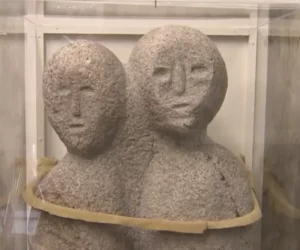The Enigmatic Moon-Eyed People of AppalachiaIn the early 1840s, a farmer named Felix Ashley stumbled upon something extraordinary while clearing his land near Murphy, North Carolina. What he unearthed was an effigy known as “The Moon-Eyed People,” which remained hidden until it was displayed publicly in 2015. Crafted through an ancient technique involving pounding stones…
Ancient Artifacts
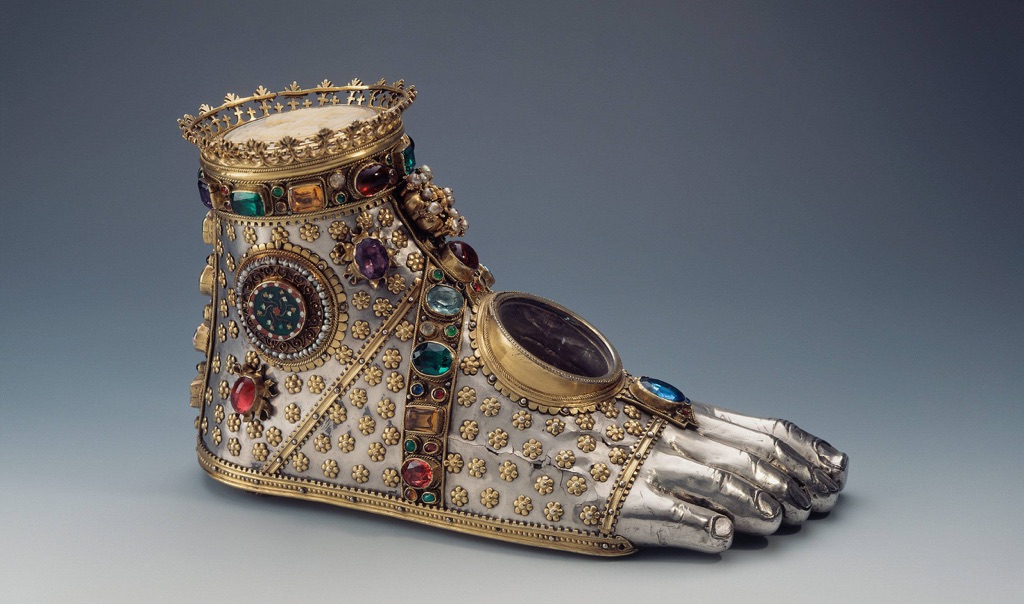
Moving to the East, ancient China artifacts like bronze vessels and oracle bones shed light on the rituals and governance of early Chinese dynasties. These artifacts highlight China’s long history of craftsmanship and written language. Similarly, ancient Egyptian artifacts are world-renowned, particularly for their funerary art, such as the treasures from King Tutankhamun’s tomb. These pieces reflect the Egyptians’ beliefs about death and the afterlife. Artifacts are not just old objects to be displayed in museums; they are keys to unlocking the secrets of human development across the ages. They preserve the ideas and values of people who lived thousands of years before us. Through careful study, they teach us about our collective history and heritage.
Among the most famous ancient artifacts in the world is the Rosetta Stone. Discovered in 1799, this granodiorite stele was the key to understanding Egyptian hieroglyphs—a script made of small pictures that was used originally in ancient Egypt for religious texts. The Rosetta Stone is inscribed with a decree issued at Memphis in 196 BC on behalf of King Ptolemy V. The decree appears in three scripts: the upper text is Ancient Egyptian hieroglyphs, the middle portion Demotic script, and the lower Ancient Greek. Because it presents essentially the same text in all three scripts, it provided the crucial link for scholars to decipher Egyptian hieroglyphs, thereby opening a window into ancient Egyptian history.
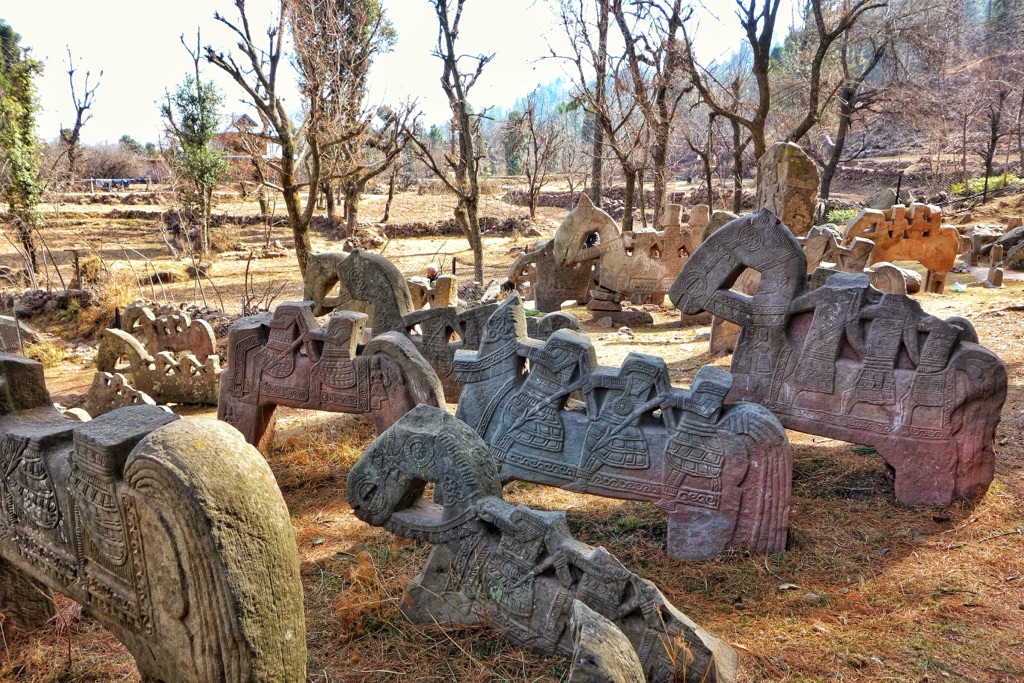
The title of the oldest artifact on earth goes to the stone tools found in Lomekwi 3, Kenya, which date back to 3.3 million years ago. These tools predate the earliest known humans and suggest that tool-making was a part of our pre-human ancestors’ way of life. These ancient tools mark a significant milestone in human evolutionary history, indicating the beginnings of technology and innovation. They are not just simple objects; they represent the dawn of human ingenuity and the very first steps towards the complex societies we have today.
An ancient artifact can be defined as any item made or used by humans in ancient times that has cultural, historical, or archaeological significance. These artifacts can range from monumental structures like the pyramids of Egypt to small, everyday objects like Roman coins. They can include items as diverse as weapons, clothing, and artwork. Each artifact, no matter its size or apparent significance, offers a glimpse into the lives of those who came before us, providing evidence of past behaviors, beliefs, and social structures.
Famous ancient artifacts not only include monumental finds like the Rosetta Stone or the treasures of Tutankhamun’s tomb but also the Terracotta Army of China, the Dead Sea Scrolls, and the Venus of Willendorf. The Terracotta Army, buried with the first Emperor of China, Qin Shi Huang, consists of thousands of life-sized figures meant to protect the emperor in the afterlife. The Dead Sea Scrolls, discovered in a series of caves near the Dead Sea, are ancient Jewish texts that offer invaluable insight into the history of Judaism and the early text of the Bible. The Venus of Willendorf, a small Paleolithic figurine discovered in Austria, dates back to about 28,000 BCE and is thought to represent fertility. Each of these artifacts, in its own way, has reshaped our understanding of human history, offering evidence of the complexity, diversity, and ingenuity of ancient civilizations.
List of Discovered Ancient Artifacts
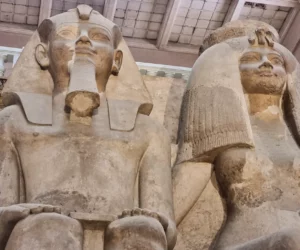
Colossal statue of Amenhotep III and Tiye
The colossal statue of Amenhotep III and Tiye stands as a remarkable testament to the artistry and craftsmanship of ancient Egypt. This grand limestone sculpture, featuring Pharaoh Amenhotep III, his Great Royal Wife Tiye, and three of their daughters, is the largest known dyad ever carved. Originally located in Medinet Habu, Western Thebes, the statue…
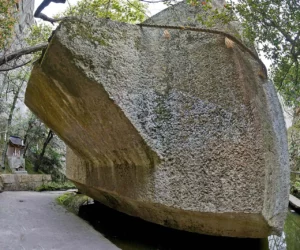
Ishi no Hōden
The Ishi no Hōden: A Floating MarvelNestled in the serene grounds of Ōshiko Jinja, the Ishi no Hōden is a captivating megalithic monument. This Shinto shrine, located in Takasago, Hyōgo Prefecture, houses this mysterious stone, also known as Ame no Ukiishi or “The Floating Stone.”Unveiling the EnigmaThe Ishi no Hōden, carved from tuff, stands surrounded…
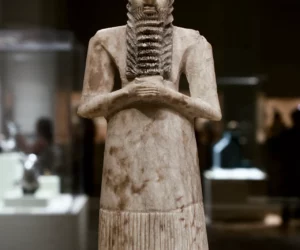
The Tell Asmar Hoard
The Tell Asmar Hoard: An Ancient Mesopotamian TreasureThe Tell Asmar Hoard, dating back to the Early Dynastic I-II period (c. 2900–2550 BC), consists of twelve statues (The Eshnunna Statues). These remarkable artifacts were discovered in 1933 at Eshnunna, now known as Tell Asmar, in Iraq’s Diyala Governorate. Despite other finds in Mesopotamia, these statues remain…
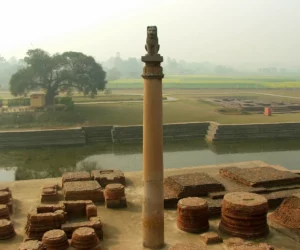
Pillars of Ashoka
The Pillars of Ashoka: Monuments of Ancient IndiaThe pillars of Ashoka are a series of monumental columns dispersed throughout the Indian subcontinent. These were erected by Ashoka the Great, the third Mauryan Emperor, who reigned from around 268 to 232 BC. Ashoka referred to his pillars as “Dhaṃma thaṃbhā,” meaning “pillars of the Dharma.” These…
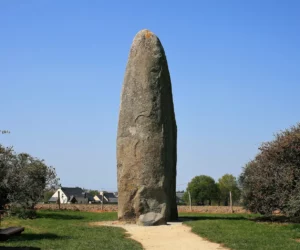
Menhir de Champ-Dolent
The Majestic Menhir de Champ-Dolent: A Stone of MysteryThe Menhir de Champ-Dolent stands tall and proud in a field near Dol-de-Bretagne. This menhir, or upright stone, is a towering figure, rich with history and folklore. It’s the second largest standing stone in Brittany, measuring over 9 meters high.Location and AccessibilityYou’ll find the Menhir de Champ-Dolent…

